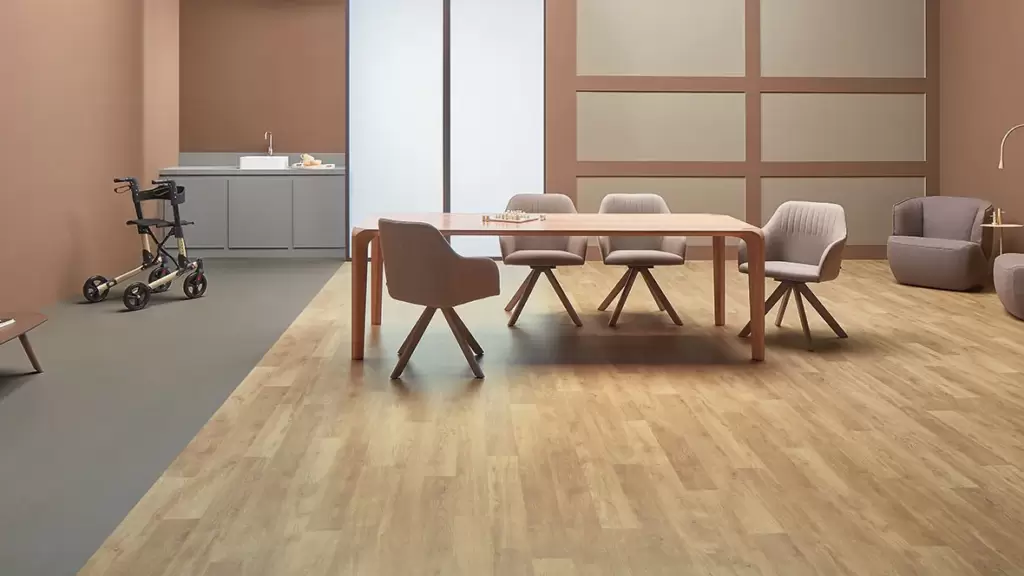When noise is made within your building, it will either be absorbed, reflected or transmitted by your wall and flooring. The goal of sound treatment is : (1) prevent transmission of sound from room to room and floor to floor, and (2) reduce background noise to enhance the quality of speech or music within rooms. Installing acoustic flooring is an effective and efficient way of accomplishing this goal.
While acoustic ceiling and wall treatments protect against transmission of sound from room to room, acoustic flooring is effective at preventing the transmission of sound from an upper floor to a lower floor. Together with ceiling and wall coverings, your acoustic flooring system will help create the best acoustic environment for your building’s application.

Acoustic flooring options:
While these materials are not one-size-fits-all, there are some materials that are better at preventing sound transmission than others.
Here are some of the best acoustic flooring materials:
Wood Plastic Composite (WPC) Flooring
WPC is durable, waterproof and easy to maintain. It also provides great benefits, especially when it comes to reducing the impact noise . Its benefits are largely drawn from its backing layer, which not only provides sound insulation, but also protects against mould.
Vinyl Tile
Vinyl tile, especially installed with a sound-insulating underlayment, is a great resilient flooring option used for sound treatment. Many facilities are selected due to its design versatility, durability and relatively low maintenance costs.



